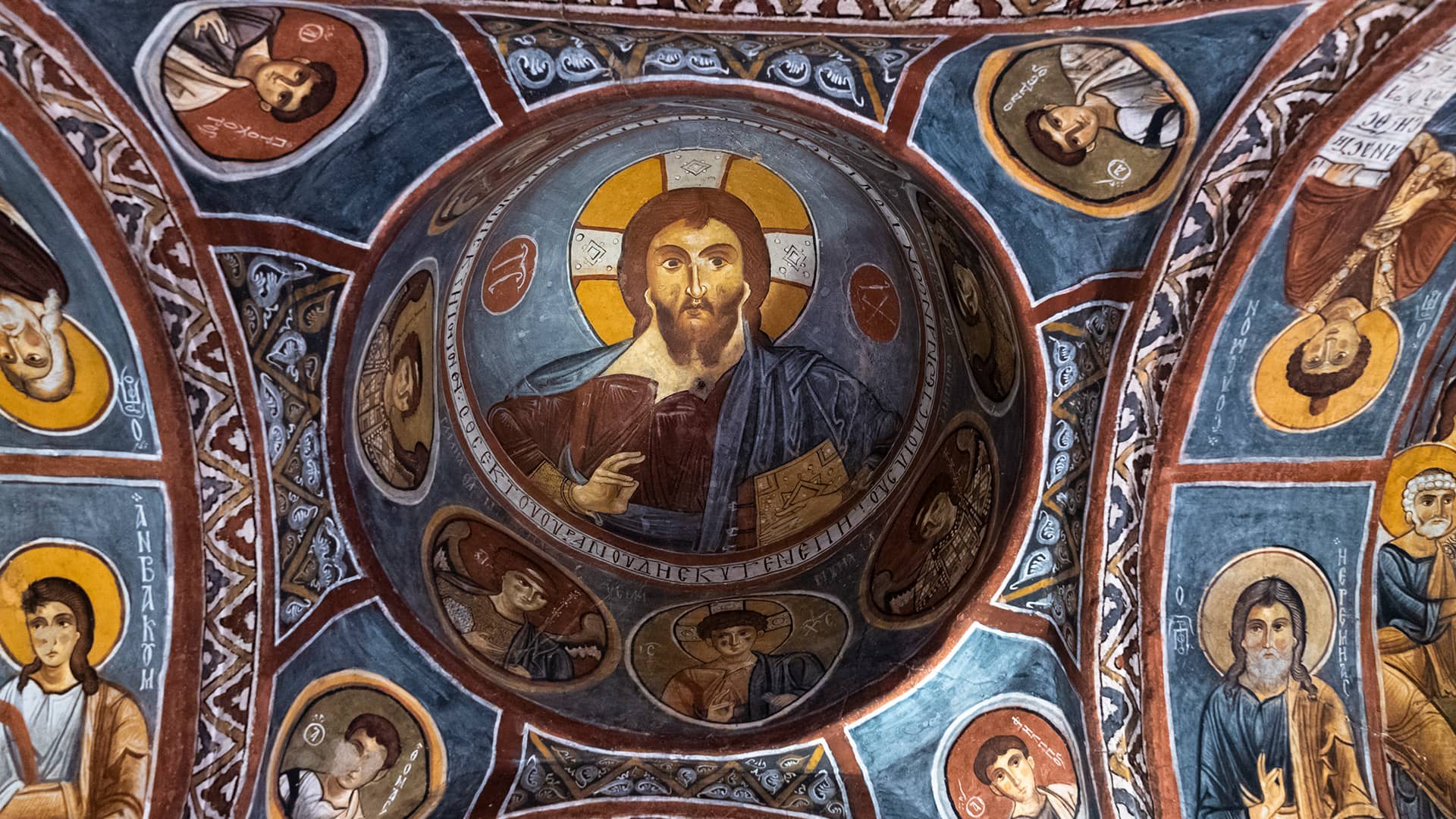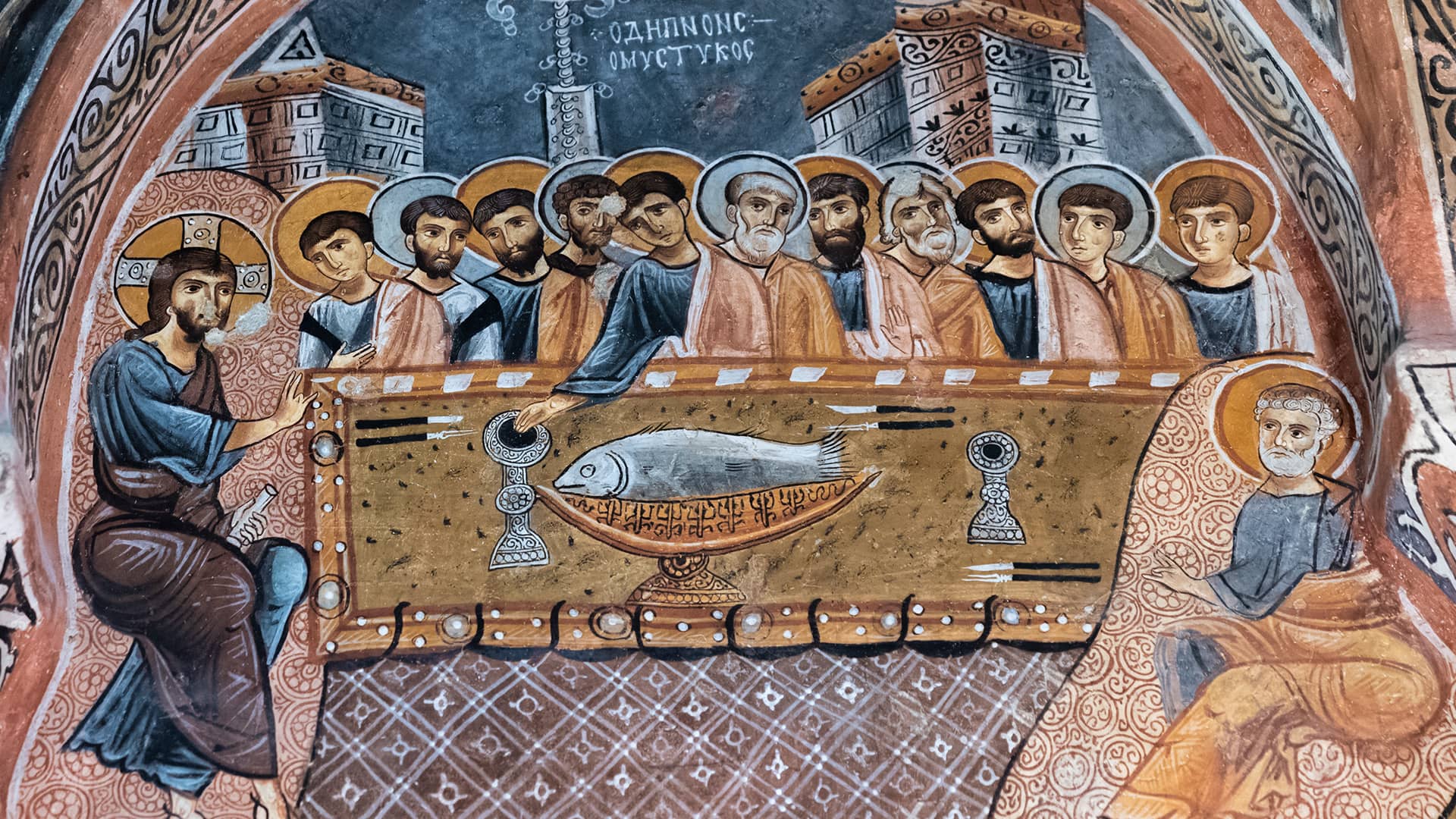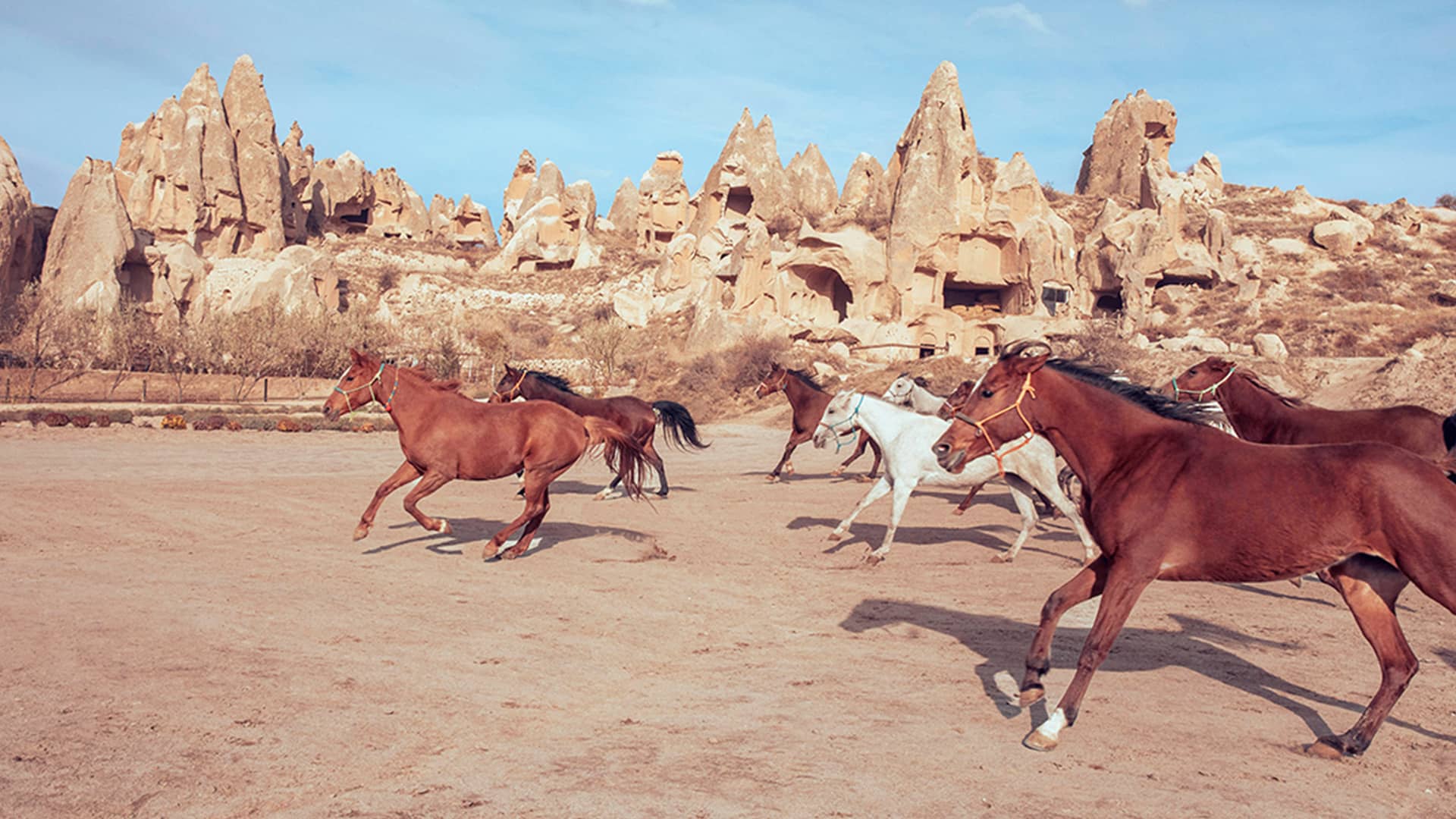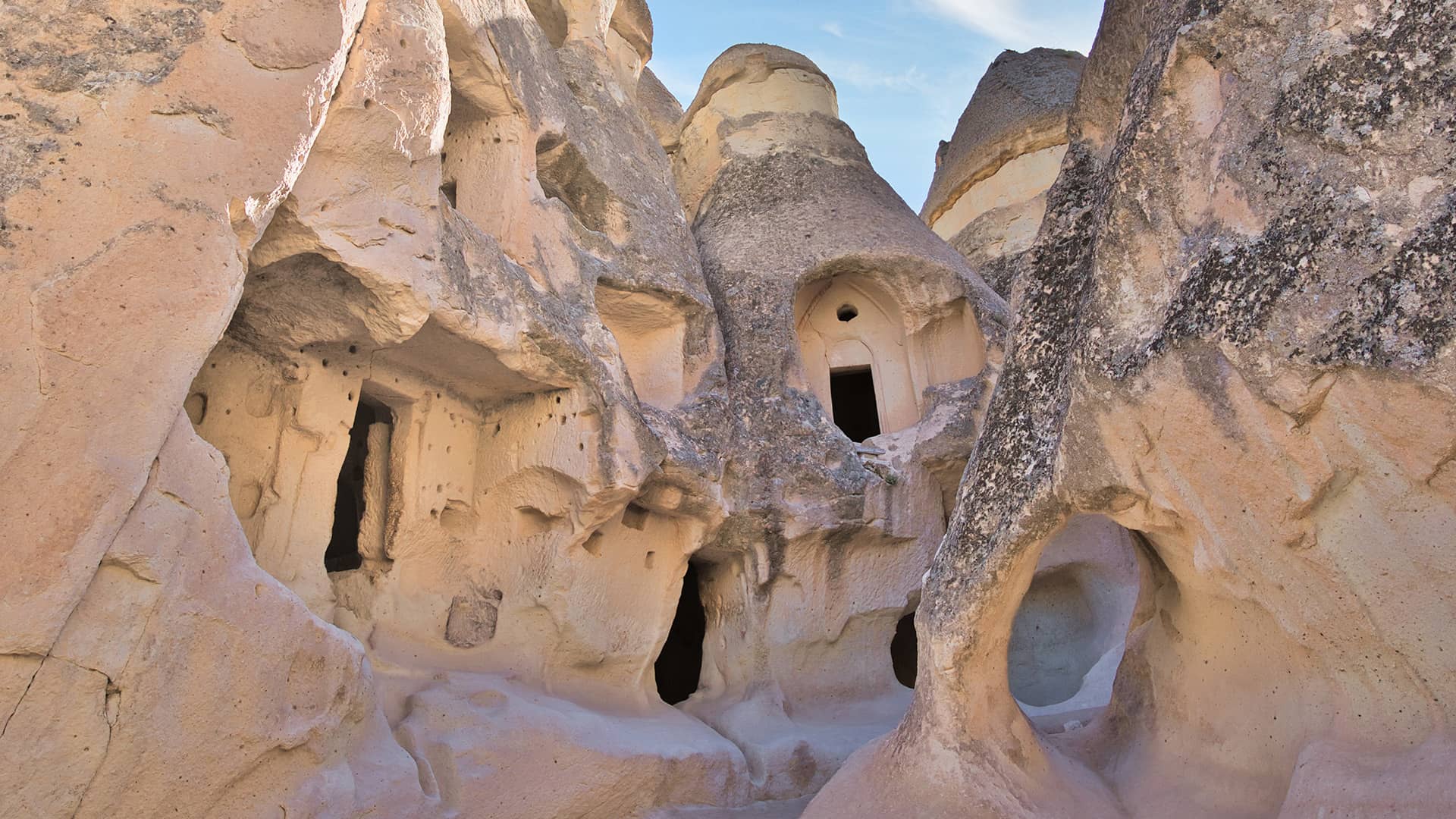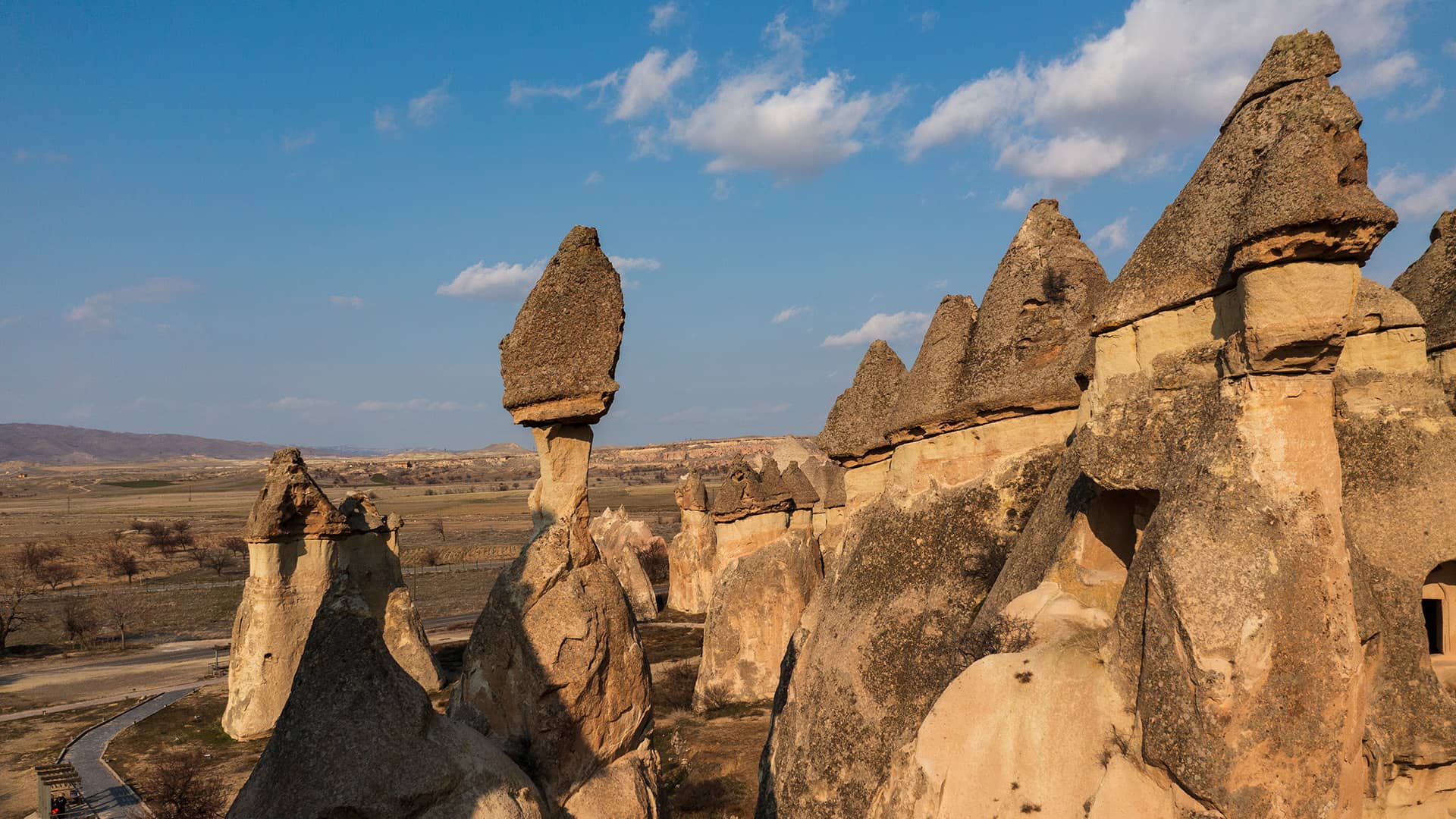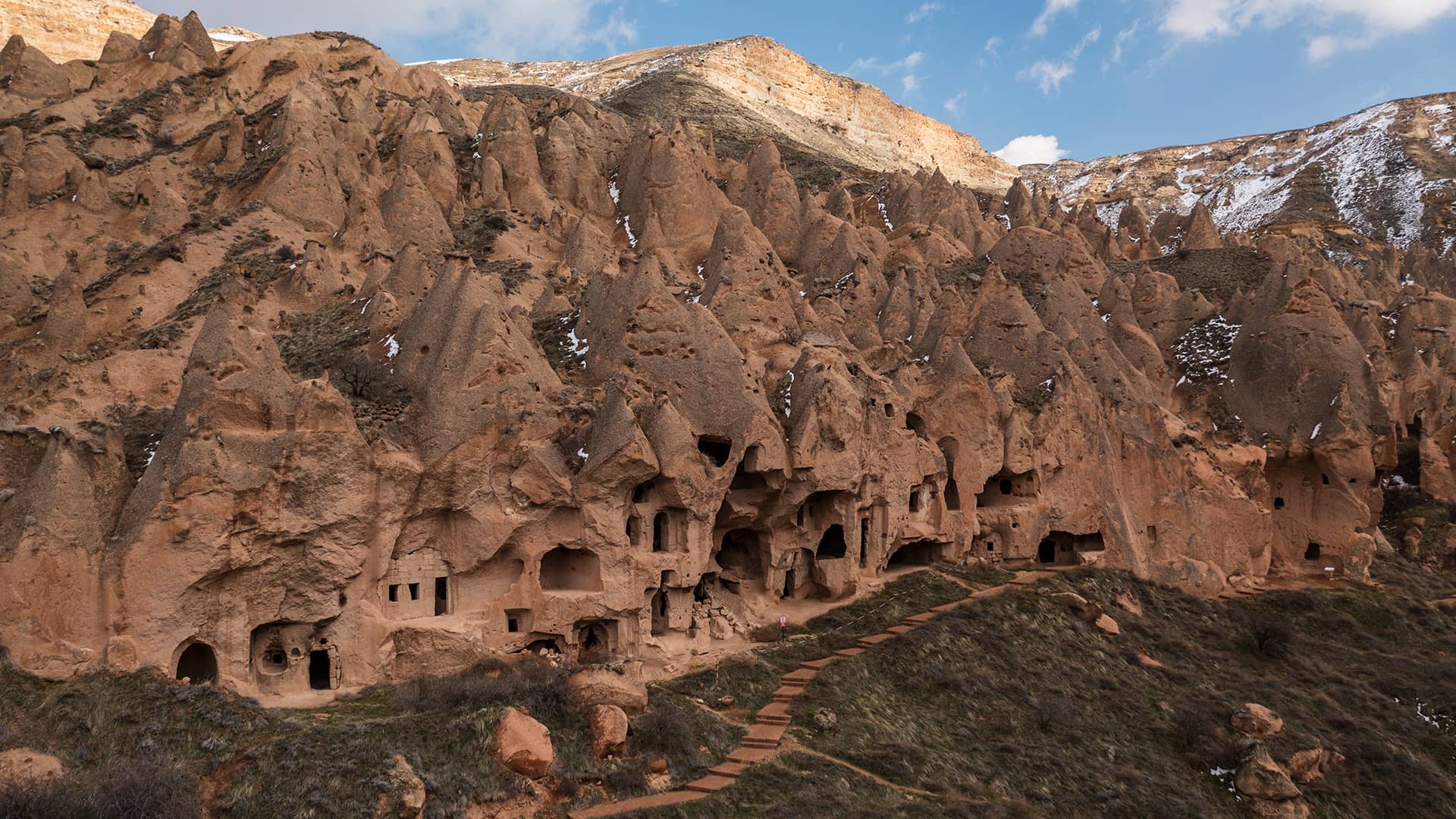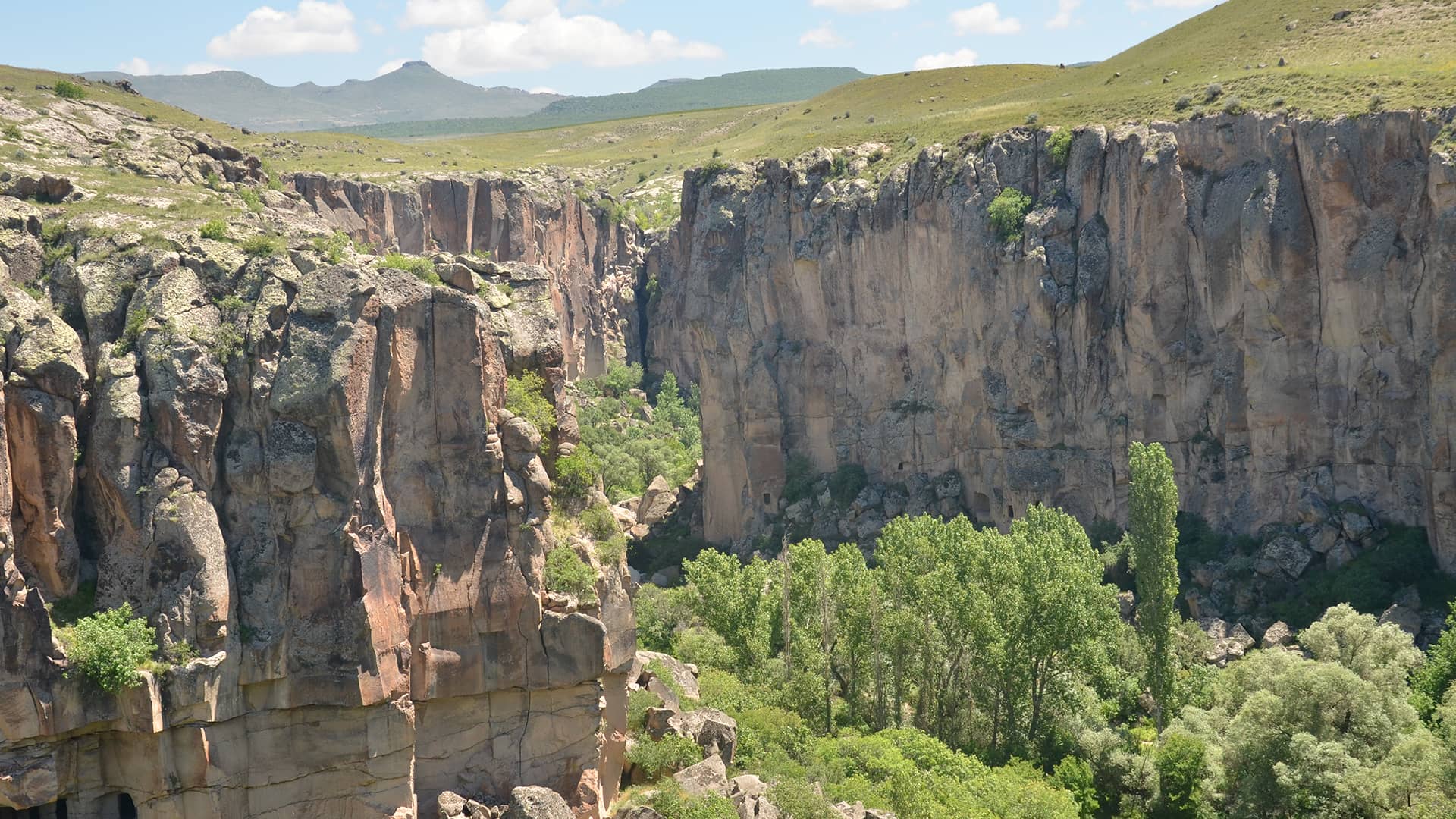

experiences
Cappadocia in Early Christianity
“Rocky wonderland that housed Early Christians”
Cappadocia… A dream of a land, gracefully sparkling its texture: extraordinary landforms bestowed by the nature itself, mesmerizing vistas dusk till dawn, wonderous architecture carved into the soft rocks, colored balloons greeting fairy chimneys with every chance they get, and traces of history taking guests to travel in time.
The sublime story of the land dates back millions of years ago to the eruption of the two volcanic mountains of Central Anatolia, the Erciyes and Hasan mountains. The tuff and basalt layering itself throughout the region then gets formed by the wind, and hot and cold air, turning amorphous into the mystic fairy chimneys for miles to flaunt. As the reinvention of nature has completed, earthlings began to show their faces and added invasions, riots, and migrations to its history being written.
In the rugged landscapes of Cappadocia, enveloped by the undulating hills of Kayseri and the valleys of Nevşehir, and Aksaray, the early Christians etched their sacred legacy into the very rock that sheltered them. This region, became the sanctuary for the faithful, and played a pivotal role in the development of early Christian thought and practice. As the Roman Empire cast a shadow of persecution, the caves and cliffs of Cappadocia became a canvas for an enduring spiritual community.
First Christians who fled away from oppression and violence made the fairy chimneys their home. After settling down, carved their churches inside these very same rocks. They built complete underground cities, with ventilated living areas and everything. Today, those ancient structures seem to require permission from the present time in order to take you on a magical journey in both time and dimension. Are you ready to shift the nature of reality into something extraordinary?
Echoes of Faith
Here, amidst the labyrinthine underground cities and soaring fairy chimneys, devout Christians established an unparalleled network of chapels, monasteries, and living quarters. The intricate frescoes and carvings that adorn these sanctuaries tell a story of resilience, devotion, and a profound quest for the divine. Cappadocia’s spiritual heritage is intricately linked to influential theologians like Basil the Great, Gregory of Nyssa, and Gregory of Nazianzus—collectively known as the Cappadocian Fathers—who laid down doctrinal foundations that resonate through Christianity to this day. We take you on a journey through the heart of this historic terrain, where each stone whispers tales of faith that have echoed through millennia.
In the Footsteps of Monks: Cappadocia's Rock-Cut Wonders
Our journey starts from Göreme where the monastic rules of St. Basil set an example for monastic life all over the world. The Göreme Open Air Museum, a UNESCO World Heritage site in 1985, is only a 20-minute walk from the town center. The museum is home to numerous rock-cut churches, chapels, and monasteries, each adorned with intricate frescoes that depict biblical scenes and saints. As you explore the maze-like corridors and hidden chambers, you can't help but marvel at the skill and dedication of the artists who created these masterpieces centuries ago.
The most essential structures in and around the area are, without a doubt, the Dark (Karanlık) Church and Tokalı Church. Dark Church’s lack of light has made this church keep its treasures alive, letting the frescoes resist the ruthless nature of time. Small yet significant, El Nazar Church in Göreme is a cross-shaped marvel, inviting contemplation within its quiet, frescoed walls.
Your next destination may not radiate its allure from afar but once in, you will leave in awe for sure. Çavuşin village lies within minutes from Göreme. Once you are through this seemingly ordinary village, your path will take you to ancient ruins and fairy chimneys, just follow the tracks and you will find yourself in an area famous for its churches and clergy houses. You can access the oldest churches, built between 1st and 10th centuries, through this path. Extending your walk half an hour, you can reach the churches in Güllüdere and Kızılçukur though the most enticing site inviting you just near the slope of a cliff: one of the oldest and the largest in Cappadocia, the Church of St John the Baptist.
Paşabağ, also known as Monk’s Vineyard, is about a km off the Göreme-Avanos road to Zelve. Here in Paşabağ, a chapel dedicated to St. Simeon and a hermit's shelter are built into one fairy chimney with three heads. The entrance of the cell, which can be reached with a chimney-like narrow tunnel, is decorated with crosses. They hollowed out the chimneys from top to bottom, creating rooms 10-15 m high. They slept on beds made from rocks and were fed by locals via buckets on ropes lowered down from their lofty perches.
Consisting of three valleys, Zelve, which was a residential area, has the most intensity in terms of fairy chimneys. The important churches in the valley are Balıklı and Üzümlü, all hauntingly captivating, illustrating the ancient monastic life.
Ürgüp: The Heart of Cappadocia's Cultural and Religious Tapestry
Moving from Göreme to the east, Ürgüp welcomes you to its ceaseless wonders. Aside from it being the largest settlement in Cappadocia, it’s also a magnificent source for its immersive sights. These two elements combined bring out one of the most unique pictures.
Ürgüp, once known as Osiana, provided a crucial intersection for cultural and religious exchange. The landscape around Ürgüp is marked by soft volcanic rock formations where an intricate network of rock-cut churches as early as 4th century, adorned with ancient frescoes, stands as a testament to the vibrant early Christian community.
Explore the serene environs of Keşlik Monastery, where monks once lived and worshipped away from the world's eyes. Delve into its modest chapels and refectory, adorned with timeworn frescoes.
In Mustafapaşa, one of the Best Tourism Villages by UN Tourism, the Church of Saint Basil stands as a testament to one of Cappadocia's great theologians, its walls a canvas of vibrant frescoes. Saint Basil was “the Great Basil of Kayseri”, is the oldest and most well-known of the “Cappadocian Fathers”.
Nearby, the Soğanlı Valley offers a peaceful retreat, where ancient rock-cut dwellings and chapels blend harmoniously with the landscape, providing a quiet space for contemplation and exploration. You can detour your journey to the Gümüşler Monastery, a hidden gem tucked away in the peaceful landscape. The monastery's ancient halls and impressive frescoes stand as a testament to the devotion of those who once sought refuge here.
Don’t miss the chance to explore Cappadocia’s fascinating underground settlements, including the cities of Kaymaklı and Derinkuyu. These remarkable places once sheltered thousands of people, including early Christians, offering a glimpse into the region’s rich history.
One of the Largest Canyons in the World: Ihlara Valley
If you wish to travel beyond time and explore a world you have never stepped foot on, Ihlara Valley is the place you are searching for.
Due to its unique geological characteristics, this 14-kilometre-long valley boasts churches adorned with frescoes that have been sculpted into the rocks, reflecting a monastic ethos. Of the 105 churches, 14 are accessible to the public, including Ağaçaltı, Sümbüllü, Yılanlı, Kokar, Prenliseki, Eğritaş, Direkli, Saint Georgeus, Karagedik, Ala, Bezirhane, Bahattin Samanlığı, and Batkın Churches. Churches near Ihlara display Eastern influences, while those near Belisırma Village are known for their Eastern Roman (Byzantine) wall paintings.
At the end of this canyon, Selime Cathedral, the largest in Cappadocia and dating back to the 8th and 9th centuries, will welcome you. This cathedral and monastery complex, strategically located on a caravan route. Not only a place for rest and worship, Selime also served as a training ground for regional clergy and hosted the first loud ritual. The architecture, predominantly carved from rock and influenced by Eastern Roman art, incorporates a castle on the upper level.

